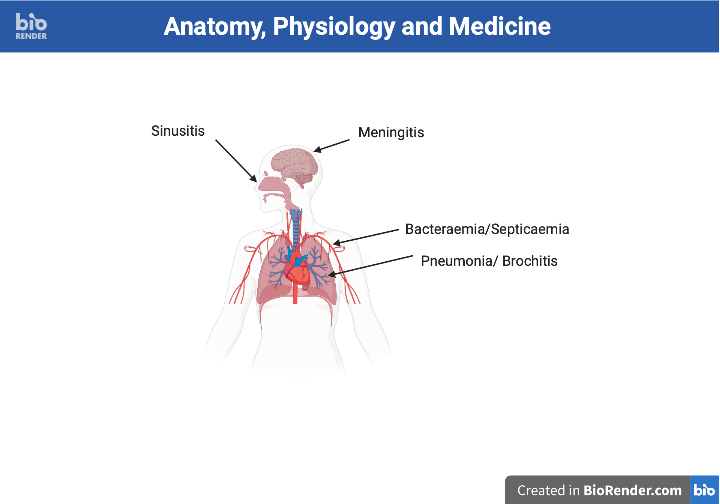Disease
Most at risk populations
Young children and the elderly are particularly vulnerable to pneumococcal disease, due to the immaturity of the immune system in the former group and waning immunity in the latter.

Photo by Noam Jordan on Unsplash
Other risk factors include:
- Immunosuppression (including HIV and cancer)
- Chronic diseases, such as diabetes, sickle cell disease, cardiovascular disease and renal disease
- Malnutrition
- Asplenia
- Smoking and indoor air pollution
- Concomitant viral infection such as influenza or respiratory syncytial virus (RSV)
S.pneumoniae can cause different diseases and the clinical features of the disease are dependent on the affected body parts shown in the figure below.
|
Non-invasive Infections
|
Invasive Infections (infections of a normally sterile body fluid)
|

Différents types d'infection pouvant être causés par le pneumocoque.
Pneumococcal meningitis
Pneumococcal meningitis has a high case fatality rate that ranges between 20% in developed countries and over 50% in developing countries, highlighting the importance of effective surveillance, prevention, diagnostics and treatment tools.
Click here to learn more about the symptoms of bacterial meningitis.
Pneumococcal meningitis has been attributed to at least 37 900 deaths from 2000 to 2015, globally. Survivors of pneumococcal meningitis can go on to develop long-term conditions that include:
- Hearing loss
- Neurological deficits
- Neuropsychological impairments








